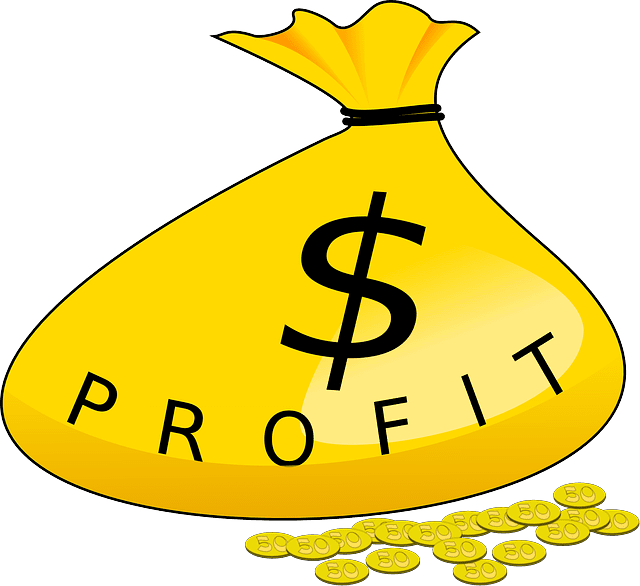When an investor makes a loan, they typically expect the recipient to pay interest to compensate for use of the money. So, on a loan of $200 with an interest rate of 10%, the investor would be paid $20 of interest.
As much as receiving 10% on a loan one time is nice, compound interest, is where things really pick up. Compound interest refers to receiving interest not only on the principal that started the investment, but to earning interest on interest. So, taking the above example a step further, if the investor decided to actually roll the $20 interest payment back in, they would have a total of $220 loaned out. At 10% interest, the next payment would amount to $22 ($220 x 10%). Rolled back in, $242 would then be earning interest, resulting in a $24.20 payment and so on.
The easiest way to understand compound interest is to think of a snowball; each time the snow is rolled, its size increases. The surface area continues to grow with each revolution and allow it to attract even more snow. Anyone who has taken a snowball and rolled it into a snow boulder too heavy to lift should be able to grasp this concept well enough.
Table of Contents
A Million Bucks vs. One Penny
To demonstrate just how quickly compound interest can take a small sum and turn it into a huge amount, consider the following question:
Would you rather be paid one million dollars now or the final sum of one penny doubled each day for one month?
For those without a firm grasp of compound interest and those without a calculator handy, most would simply take the million dollars and move on with their day.
As I’m sure you’ve guessed, this would be the wrong answer.
Consider the following chart:
| Day | Amount |
|---|---|
| 1 | $0.01 |
| 2 | $0.02 |
| 3 | $0.04 |
| 4 | 0.08 |
| 5 | 0.16 |
| 6 | 0.32 |
| 7 | 0.64 |
| 8 | 1.28 |
| 9 | 2.56 |
| 10 | $5.12 |
| 11 | $10.24 |
| 12 | $20.48 |
| 13 | $40.96 |
| 14 | $81.92 |
| 15 | $163.84 |
| 16 | $327.68 |
| 17 | $655.36 |
| 18 | $1,310.72 |
| 19 | $2,621.44 |
| 20 | $5,242.88 |
| 21 | $10,485.76 |
| 22 | $20,971.52 |
| 23 | $41,943.04 |
| 24 | $83,886.08 |
| 25 | $167,772.16 |
| 26 | $335,544.32 |
| 27 | $671,088.64 |
| 28 | $1,342,177.28 |
| 29 | $2,684,354.56 |
| 30 | $5,368,709.12 |
One penny taken on Day 1 and doubled each day eventually becomes a whopping $5,368,709.12! Pretty incredible, eh?
The final sum in our example is, however, only part of the story.
Take a look at Day 10. What do you notice? $5.12 is not a lot of money. Exactly.
So, over the first ten days which represents a full 33% of our period, very little seems to have taken place. The penny hasn’t turned into anything consequential, particularly when stacked against the potential for a million dollars. If the layman was at this point offered a million dollars or $5.12 doubled for twenty more days, they’d probably still take the immediate seven figures and it would be tough to fault them on the face of it.
Look now at Day 20. Our penny has stilled only matured into $5,242.88. Not much, right? Two thirds of the way to Day 30 and a few thousand measly dollars is all we’ve accumulated.
Now, look again at the final sum. It took a while for the snowball to get much traction, but once it did… boom!
The lesson in all of this is that compound interest takes time. For the magic to really happen, patience is the key ingredient.
Our good friend Albert Einstein has weighed in on this effect:
“Compound interest is the eighth wonder of the world. He who understands it, earns it… he who doesn’t… pays it.”
Why The Lazy Investor Wins
It has been shown time and time again that activity ruins portfolios. The more someone checks on their stocks, the more likely they are to underperform overall.
When you take a look at the compound interest chart above, it should become evident why this is the case.
The average investor spends their time reading analyst reports or looking to the ratings agencies to do their homework for them. As these analysts shift their ratings up, down, and back up again in a manic game of chess, anyone following along with their money at home is incurring commissions and taking the risk that the analyst is actually wrong.
The lazy investor, on the other hand, does their research, buys a company’s stock, and then sits back and lets the company continue to improve operations and increase the dividend along the way. This investor then reinvests those dividends to achieve the compounding effect which allows their portfolio to blossom over time.
Remember, the magic with compound interest only happens later in the table. Anyone who is turning over their portfolio holdings every few months or even after a year or three is not going to see any real compounding taking place.
It’s the investor who has held a stock for twenty years and has seen their dividend yield-on-cost march its way up to 40% of their initial purchase price who gets to enjoy compounding’s magic.
Reinvested Dividends
As I just mentioned, reinvesting dividends is one of the surest ways to allow your portfolio to compound its growth.
Depending on the time period referenced, reinvested dividends tend to account for anywhere between 75-90% of total returns in the stock market. Given this, it is an interesting fact that the vast majority of investors tend to focus only on the capital gains component of total returns.
You can think of it this way; growing an investment portfolio is like growing an apple orchard. For best results, you plant your seeds in careful rows and then tend to them over the year. At first you get just a sprout and you may wonder if and when you’ll ever actually see any fruit.
After some time, some small, barely edible apples are produced and you see a glimmer of hope of what might come. Given a few more years of nurturing, your orchard has grown and each tree has thicken. One or two trees may not have made it for whatever reason, but overall the orchard is healthy and strong. Thick, juicy apples are producing by the lot and you can barely keep up with the volume produced. Harvesting the apples itself becomes a task and deciding what to do with them; eat them, sell them, or even share them generously with others.
Now ask yourself what would happen if you had been cutting branches from those trees over the years? What if you decided to even chop some down each year for the firewood? Your apple orchard wouldn’t be producing such a bountiful harvest each year, would it?
This is what most people do to their portfolios. Rather than reinvest their gains–whether capital gains, dividends, or interest–they actually sell a portion each year in retirement or even during the building stage. As a result, their portfolios don’t get to that magical point in the compounding stage where the big profits take place.
Conclusion
If compounding is the eighth wonder of the world, then perhaps Patience is the ninth. Compounding can be a rather slow process. It can even feel hopeless in the early stages of the game.
Remember that there is magic that eventually takes place if you keep the faith and stay invested. Reinvested dividends adds extra juice to your portfolio that will eventually supercharge returns that your future-self will be glad to have.
Thank you for reading.
– Ryan
When did you learn the benefits of compound interest?
Pictures courtesy of pixabay.com



Hi, Ryan! This is a great article! You did an amazing job explaining every detail so people without any previous knowledge can easily understand a advise you`re giving here. This is very attractive and interesting topic, especially in this economy.
Hi Nigel,
Thank you for reading the article and we appreciate the feedback! Hope you find value in everything on our site and continue to follow the journey.
Take care,
Ryan
Great Article on Compound Interest !
Thank you, Melanie!